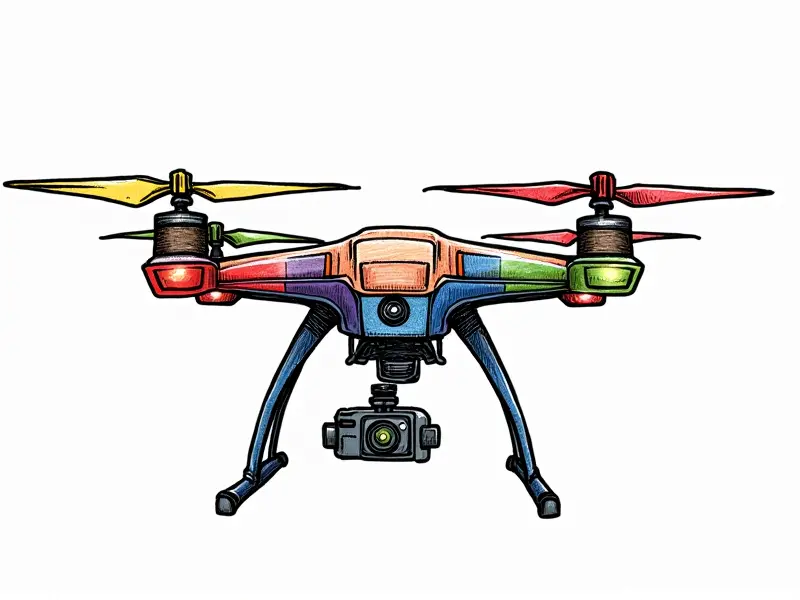Overheating drone solutions

Overheating Drone Solutions
Fixing Overheating Drones Quickly
When your drone starts to overheat during flight or operation, immediate action is necessary to avoid potential damage. Here are some quick steps you can take:
- Land the Drone Immediately: The first step should always be landing your drone as soon as possible.
- Check Battery Temperature: Use a thermal camera or touch the battery to assess its temperature. If it feels excessively hot, disconnect it immediately.
- Cool Down Components: Allow the drone's components to cool down naturally in a shaded area away from direct sunlight.
Stop Drone Overheating in Seconds
To address overheating issues instantly, consider these immediate actions:
- Reduce Flight Time: Shorten flight durations to prevent prolonged exposure to high temperatures.
- Increase Ventilation: Ensure that the drone's vents are clear and unobstructed for proper airflow.
- Use High-Quality Batteries: Invest in batteries designed with heat management features such as cooling fins or thermal insulation.
Prevent & Solve Drone Overheat Issues
To prevent overheating issues from occurring, follow these proactive measures:
- Maintain Proper Maintenance Schedule: Regularly inspect and clean your drone's components to ensure they are functioning optimally.
- Select Appropriate Flight Conditions: Avoid flying in extremely hot or humid environments where overheating is more likely.
- Upgrade Cooling Systems: Consider adding external cooling systems like fans or heat sinks to your drone's design.
Cooling Solutions for Hot Drones
Several innovative solutions can help keep your drones cool during operation:
- Liquid Cooling Systems: Implement liquid-based cooling systems that circulate coolant through the drone’s critical components.
- Thermal Insulation: Use thermal insulation materials to protect sensitive parts from external heat sources.
- Active Cooling Fans: Install small, efficient fans within the drone's frame to enhance airflow and dissipate heat more effectively.
Quick Fixes for Overheating FPV Racing Drones
FPV racing drones often face unique overheating challenges due to their high-performance nature. Here are some quick fixes:
- Optimize Battery Management: Use advanced battery management systems that monitor and regulate temperature.
- Reduce Motor Power Output: Lower the power output of motors during flights in hot conditions to reduce heat generation.
- Enhance Heat Dissipation: Incorporate additional heat sinks or cooling fins on motor mounts for better thermal management.
Protect Your Drone Battery from Overheating
Batteries are one of the most critical components prone to overheating. Here’s how you can protect them:
- Select High-Quality Batteries: Choose batteries with built-in thermal protection features.
- Monitor Battery Temperature: Use temperature monitoring tools or apps to keep track of battery heat levels during flights.
- Avoid Overcharging: Ensure your charging system is equipped with overcharge protection mechanisms.
Overheating Issues: RC Quadcopter Solutions
RC quadcopters are particularly susceptible to overheating due to their high power density. Here’s how you can tackle this issue:
- Upgrade ESCs (Electronic Speed Controllers): Use ESCs with built-in cooling fans or heat sinks.
- Increase Propeller Size: Larger propellers provide better lift efficiency, reducing the load on motors and thus generating less heat.
- Optimize Motor Cooling: Ensure that motor casings are designed to allow for efficient airflow around them.
Preventing Helicopter Drone Engine Overheat
Helicopter drones have unique cooling requirements due to their engine-driven rotors. Here’s how you can prevent overheating:
- Select Lightweight Materials: Use materials that are both lightweight and thermally conductive.
- Incorporate Radiator Systems: Design your drone with integrated radiator systems to dissipate engine heat effectively.
- Maintain Regular Servicing: Keep the engine well-maintained by regularly cleaning and lubricating it.
Airplane Drone Maintenance: Avoiding Overheating
Airplane drones require specific maintenance practices to avoid overheating. Here are some tips:
- Monitor Engine Oil Levels: Ensure that the engine oil is at optimal levels for proper lubrication and cooling.
- Clean Intake Grills: Regularly clean intake grills to prevent blockages that could restrict airflow.
- Use Heat-Resistant Paints: Apply heat-resistant paints on critical components to protect them from excessive temperatures.
Beat the Heat: Cooling Drones
To effectively cool your drones, consider these comprehensive strategies:
- Leverage Passive Cooling Techniques: Utilize passive cooling methods such as heat sinks and thermal insulation materials.
- Incorporate Active Cooling Systems: Implement active cooling solutions like fans or liquid-based cooling systems for enhanced performance.
- Monitor Environmental Conditions: Use environmental sensors to monitor temperature and humidity levels during flights.
Avoiding Drone Overheat Damage
To avoid costly damage from overheating, follow these best practices:
- Implement Redundant Safety Features: Equip your drone with multiple safety features such as thermal cut-off switches.
- Conduct Regular Inspections: Perform regular inspections to identify and address potential overheating issues before they become critical.
- Educate Operators: Train operators on the importance of monitoring temperature levels and taking preventive measures during flights.
Conclusion
Overheating is a significant challenge for drone operators, but with the right strategies and solutions, it can be effectively managed. By implementing these cooling techniques and maintenance practices, you can ensure your drones operate safely and efficiently in various environmental conditions.
This comprehensive guide provides detailed insights into preventing and managing overheating issues across different types of drones, ensuring optimal performance and longevity.
Feel free to ask if you need any further details or additional information!

